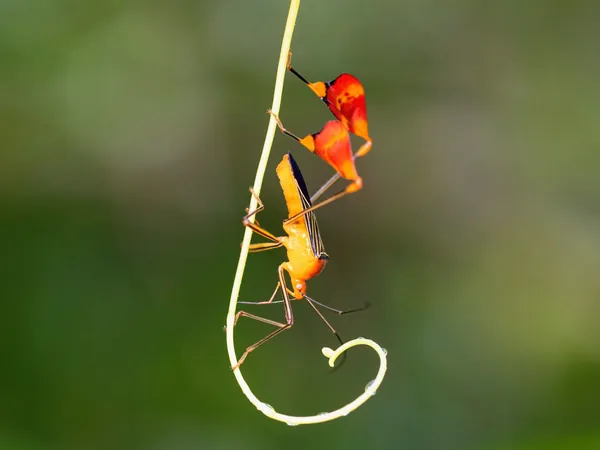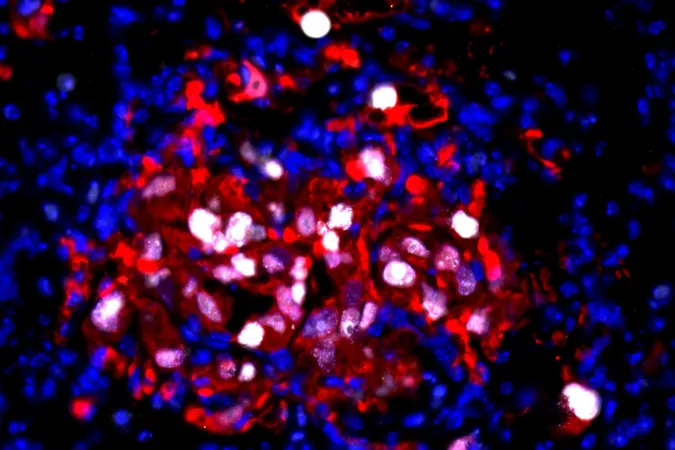
Why Matador Bugs Show Off Their Neon Legs: It's Not What You Think!
2025-09-12
Author: John Tan
A Flashy Display with a Hidden Purpose
In the animal kingdom, dazzling displays often signify courtship. Think of peacocks with their radiant feathers or peacock spiders flaunting their mesmerizing moves. Typically, such ostentatious behaviors aim to attract mates. However, Panama's vibrant matador bugs, known scientifically as Anisoscelis alipes, are flipping this narrative on its head with their eye-catching leg-waving.
The Surprising Findings of a Groundbreaking Study
Recent research from the Smithsonian Tropical Research Institute (STRI) challenges the assumption that these leg movements are merely for attracting a partner. Discovery often surprises us, remarks Ummat Somjee, a STRI postdoctoral fellow who has gained recognition for his studies on sexual selection and insect behavior.
How the Study Was Conducted
To delve deeper into this mystery, the STRI team, in collaboration with researchers from various countries, embarked on an investigation to see if matador bugs conformed to the sexual selection model, where males showcase more prominent features than females. They equipped wild-caught bugs with non-toxic paint dots for tracking and released them in controlled environments to observe their behaviors, meticulously recording over 745 instances of flag waving.
Not for Flirting, But for Survival
Their results revealed a pattern that defied traditional sexual selection logic. Male and female matador bugs exhibited similar flag sizes proportional to their body, and waving occurred more frequently when potential predators were nearby, rather than during intimate encounters. Most notably, the behavior seemed independent of the bug's sex or mixed groups.
A Clever Survival Strategy
With this evidence, researchers propose a new theory: these spectacular leg displays serve as a strategy to distract predators. Interestingly, one in six matador bugs is often missing a hind leg, suggesting that those bright flags might divert an attacker’s attention away from vital body parts. In this case, losing a leg might be a better trade-off than being eaten.
Future Research Directions
Future experiments aim to explore this intriguing hypothesis further by analyzing predator behavior in the presence and absence of these flashy legs, unraveling the potential ways they safeguard the bugs from danger.
Matador Bugs: More Than Just Eye Candy
Matador bugs aren't just fascinating for nature enthusiasts; they also impact agriculture in regions like Panama and Costa Rica, where they're known pests on passion fruit farms. Understanding how their vibrant displays work as decoys could revolutionize pest management strategies, steering away from harmful insecticides.
Transforming Observations Into Knowledge
The research highlights the importance of fieldwork, with young scientists like Cameron Longbottom experiencing the real-world dynamics of wildlife and ecology, forging a deeper understanding of these remarkable creatures.
Conspicuous Traits: Surviving Beyond Romance
While Charles Darwin laid the groundwork for understanding ornamentation through sexual selection, this study of matador bugs illustrates that such eye-catching traits can also evolve as survival mechanisms. In the grand scheme of things, these neon legs aren’t just for flirting—they might just be the key to the bugs' survival.
The Conclusion Is Clear
In essence, the flamboyant leg-waving that has captured the attention of many isn’t a mating dance but a shrewd survival tactic. The findings from this study, published in Current Zoology, remind us of the complexity of nature's designs.



 Brasil (PT)
Brasil (PT)
 Canada (EN)
Canada (EN)
 Chile (ES)
Chile (ES)
 Česko (CS)
Česko (CS)
 대한민국 (KO)
대한민국 (KO)
 España (ES)
España (ES)
 France (FR)
France (FR)
 Hong Kong (EN)
Hong Kong (EN)
 Italia (IT)
Italia (IT)
 日本 (JA)
日本 (JA)
 Magyarország (HU)
Magyarország (HU)
 Norge (NO)
Norge (NO)
 Polska (PL)
Polska (PL)
 Schweiz (DE)
Schweiz (DE)
 Singapore (EN)
Singapore (EN)
 Sverige (SV)
Sverige (SV)
 Suomi (FI)
Suomi (FI)
 Türkiye (TR)
Türkiye (TR)
 الإمارات العربية المتحدة (AR)
الإمارات العربية المتحدة (AR)